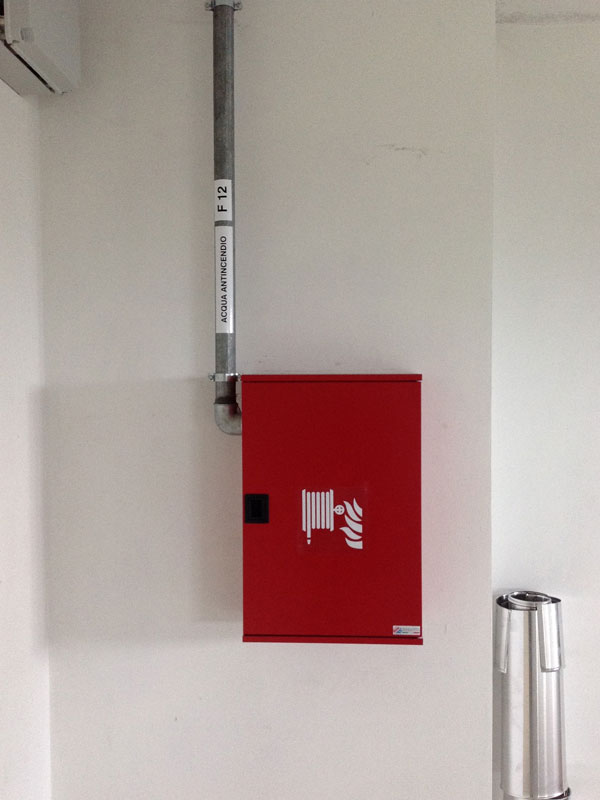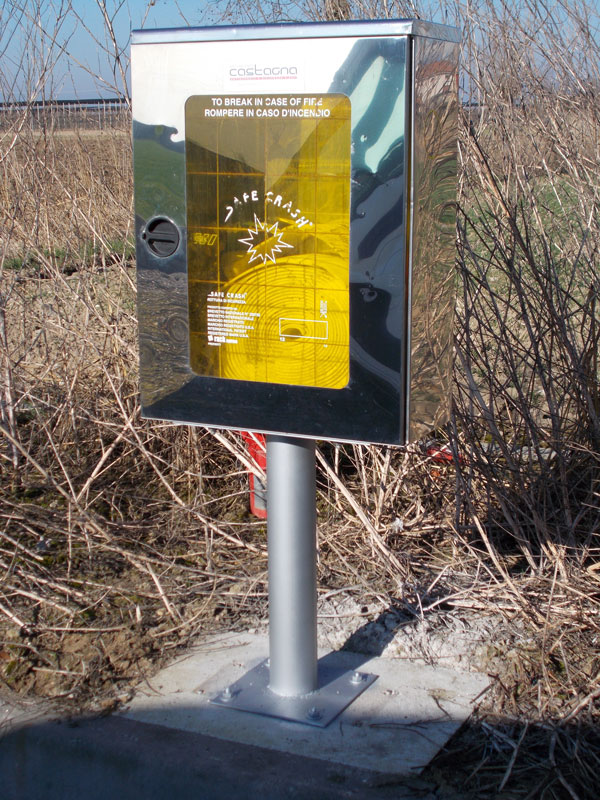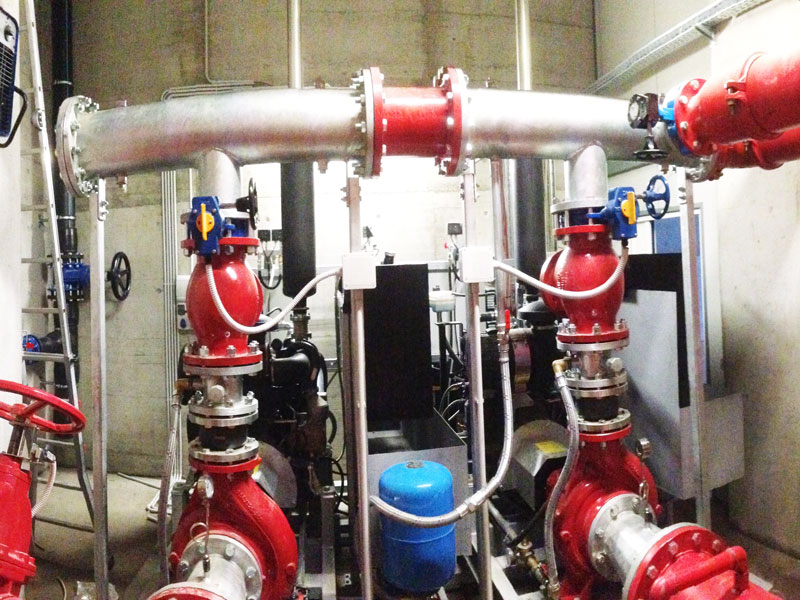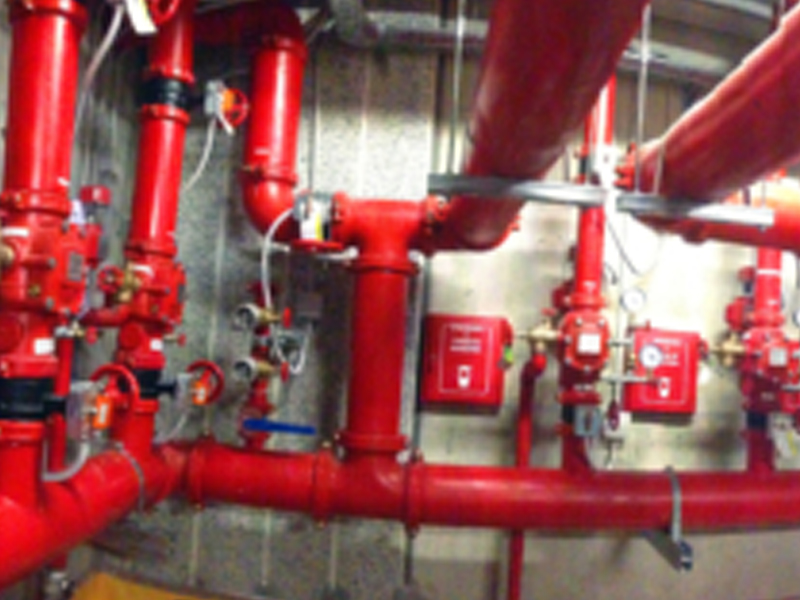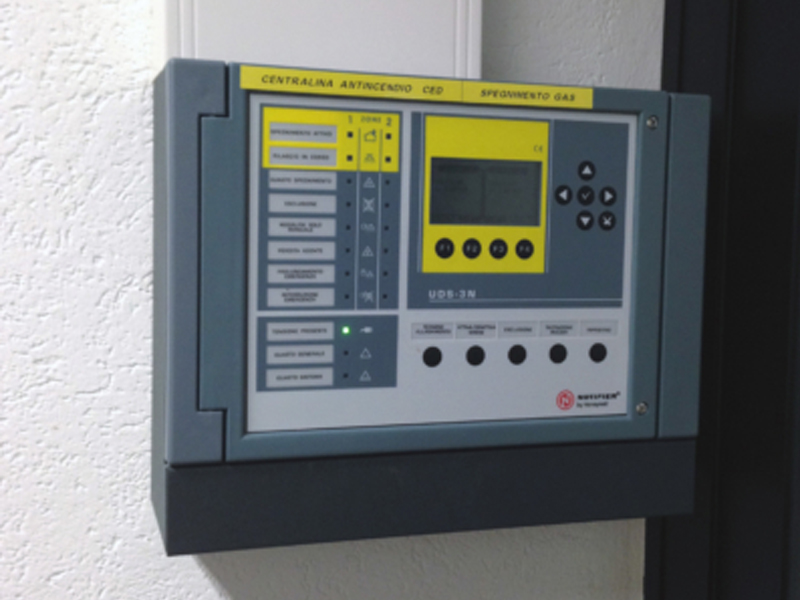Project Description
/details
Hydrant network firefighting system
The presence of a firefighting system with hydrants is considered one of the basic requirements for protecting goods and people against fire. The purpose of a firefighting water network is to distribute the necessary water evenly and in a widespread manner, guaranteeing hydraulic performance at the same time.
“…provide a suitable quantity of water to fight, by means of hydrants and the hose reels connected to them, the largest fire that is reasonably foreseeable in the protected area” (from UNI 10779)
A hydrant network firefighting system is a system of fixed water supply pipes on which one or more fire hydrants, hydrant complexes, fire hose reels, firefighting pump connections, pillar hydrants, underground hydrants, etc. are connected.
The network is connected to one or more water supplies by means of a collector; fire hydrants composed of a unified connection (UNI) can be connected to the network itself – these hydrants are equipped with a manual opening shut-off valve that performs the function of “water intake”. A hydrant is a device which, through the manual delivery of water, is used to fight fires; it can be a wall-mounted, pillar or underground type. Those most commonly used have UNI 25, 45 and 70 mm connections.
The fire hydrant network must be equipped with one or more fire department connections, composed of a shut-off valve, a non-return valve and also equipped with unified connections for fire hoses. These fire department connections have a subsidiary water supply function and must include: one or more intake ports UNI 70, a shut-off valve, a non-return valve or other device to prevent the water escaping from the pressurised system.
The availability of water with suitable flow rate and pressure characteristics is of fundamental importance for the functioning of the hydrant network; for this reason the water supplies must be realised in such a way so that the firefighting system is always efficient and in working order.
In Italy standard UNI 10779 establishes the minimum requirements that a hydrant network must possess from both the design point of view and from the installation and operation point of view, introducing the criterion of the distinction between internal and external protection, considering the hydrant network as a true fixed fire protection system, having its own systemic structure.
Fire hydrant networks can be fed directly from an aqueduct or, when necessary, from pumping stations with attached water reserve tank.
The definition of the level of risk is divided into areas of Level 1-2-3 and must be determined according to experience and objective assessment of the specific conditions of the activity concerned.
/applications
Protection of industrial complexes, logistics, shopping centres, residential areas, offices, hospitals, hotels, and all activities requiring at least one basic fixed fire protection system.
/advantages
Effective manual protection
Excellent quality/price ratio
Coded total prefabrication
Turnkey realisation complete with pump room and tank
Zero environmental impact
Possibility of pre-action systems
Possibility of water/foam systems
Quick installation thanks to the prefabricated system
Available according to UNI, NFPA and FM GLOBAL standards
/advantages
Effective manual protection
Excellent quality/price ratio
Coded total prefabrication
Turnkey realisation complete with pump room and tank
Zero environmental impact
Possibility of pre-action systems
Possibility of water/foam systems
Quick installation thanks to the prefabricated system
Available according to UNI, NFPA and FM GLOBAL standards
/details
Hydrant network firefighting system
The presence of a firefighting system with hydrants is considered one of the basic requirements for protecting goods and people against fire. The purpose of a firefighting water network is to distribute the necessary water evenly and in a widespread manner, guaranteeing hydraulic performance at the same time.
“…provide a suitable quantity of water to fight, by means of hydrants and the hose reels connected to them, the largest fire that is reasonably foreseeable in the protected area” (from UNI 10779)
A hydrant network firefighting system is a system of fixed water supply pipes on which one or more fire hydrants, hydrant complexes, fire hose reels, firefighting pump connections, pillar hydrants, underground hydrants, etc. are connected.
The network is connected to one or more water supplies by means of a collector; fire hydrants composed of a unified connection (UNI) can be connected to the network itself – these hydrants are equipped with a manual opening shut-off valve that performs the function of “water intake”. A hydrant is a device which, through the manual delivery of water, is used to fight fires; it can be a wall-mounted, pillar or underground type. Those most commonly used have UNI 25, 45 and 70 mm connections.
The fire hydrant network must be equipped with one or more fire department connections, composed of a shut-off valve, a non-return valve and also equipped with unified connections for fire hoses. These fire department connections have a subsidiary water supply function and must include: one or more intake ports UNI 70, a shut-off valve, a non-return valve or other device to prevent the water escaping from the pressurised system.
The availability of water with suitable flow rate and pressure characteristics is of fundamental importance for the functioning of the hydrant network; for this reason the water supplies must be realised in such a way so that the firefighting system is always efficient and in working order.
In Italy standard UNI 10779 establishes the minimum requirements that a hydrant network must possess from both the design point of view and from the installation and operation point of view, introducing the criterion of the distinction between internal and external protection, considering the hydrant network as a true fixed fire protection system, having its own systemic structure.
Fire hydrant networks can be fed directly from an aqueduct or, when necessary, from pumping stations with attached water reserve tank.
The definition of the level of risk is divided into areas of Level 1-2-3 and must be determined according to experience and objective assessment of the specific conditions of the activity concerned.
/applications
Protection of industrial complexes, logistics, shopping centres, residential areas, offices, hospitals, hotels, and all activities requiring at least one basic fixed fire protection system.



